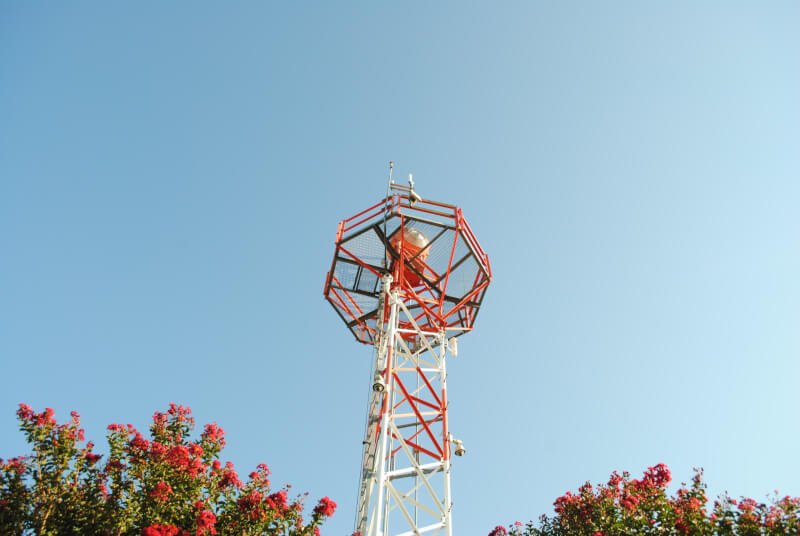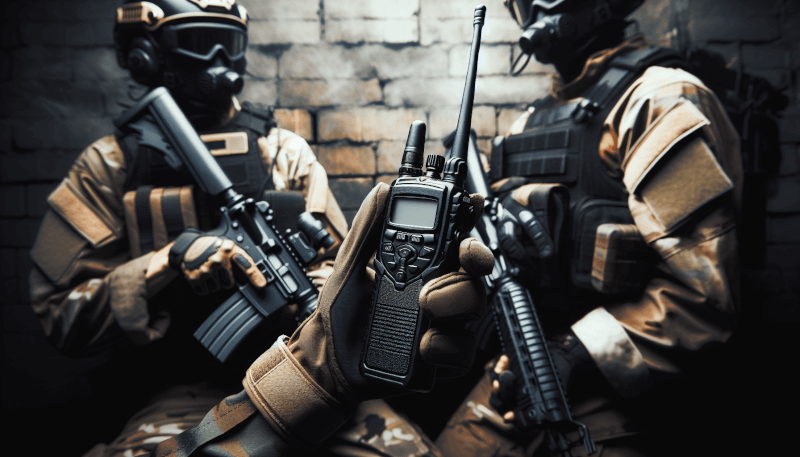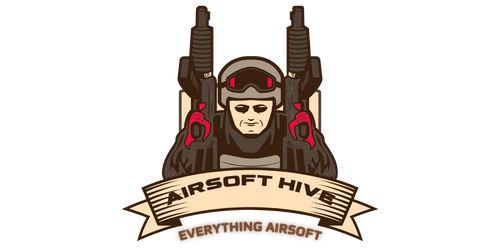In the heat of an Airsoft battle, clear and efficient communication is the key to a victorious team. Whether you are an experienced player or new to the game, mastering effective communication strategies can make all the difference in your team’s success. This article will explore various techniques and tactics that will help you and your fellow teammates effectively communicate on the battlefield, ensuring coordinated movements, intelligent decision-making, and ultimate triumph.

Planning and Preparation
Setting objectives
When it comes to effective communication within an airsoft team, setting clear objectives is crucial. Before the game or training session begins, take the time to discuss and establish the goals and targets for your team. By having a common understanding of what needs to be achieved, you can ensure that everyone is on the same page and working towards the same outcome.
Designating roles and responsibilities
To facilitate smooth communication, it is important to designate specific roles and responsibilities within the team. Assigning tasks such as team leader, radio operator, and squad leaders can help streamline communication channels and ensure that each member is aware of their duties. Clearly defining these roles allows for efficient communication during critical moments and minimizes confusion during gameplay.
Creating a communication plan
Developing a communication plan is essential for effective coordination and team cohesion. This plan should include the preferred methods of communication, such as hand signals, radio communication, and pre-determined call signs, which will be discussed further in the following sections. By establishing a clear communication plan, you can minimize misinterpretations and maximize the efficiency of your team’s overall performance.
Developing Clear Communication Channels
Using hand signals and gestures
In the heat of battle, verbal communication may not always be feasible or effective due to noise or distance. This is why hand signals and gestures play a crucial role in maintaining clear communication channels within an airsoft team. By establishing a set of universally understood signals and gestures, team members can quickly convey important messages without using words. Practice and familiarize yourself with these signals to ensure effective communication in the field.
Establishing radio communication codes
Utilizing radio communication is paramount for efficient and timely transmission of information during airsoft operations. To enhance communication clarity, it is essential to establish radio communication codes. These codes can include standardized phrases, abbreviations, and numbers that represent specific actions or situations. By adopting radio communication codes, your team can effectively convey crucial information while maintaining brevity and precision.
Utilizing pre-determined call signs
During airsoft operations, it is vital to identify team members quickly and accurately. To achieve this, it is recommended to utilize pre-determined call signs. Call signs are unique names or designations that team members can use to address each other. Using call signs instead of real names minimizes confusion and enhances communication efficiency, particularly in high-intensity situations. Ensure that everyone in your team is familiar with the assigned call signs to prevent any misunderstandings.
Maintaining Effective Verbal Communication
Using concise and clear language
When communicating verbally in airsoft operations, it is essential to use concise and clear language. Avoid unnecessary details or lengthy explanations that may cause confusion or delay in transmitting information. Keep your messages short and to the point, focusing on conveying the most critical information efficiently. By using concise and clear language, you ensure that urgent messages are understood quickly, minimizing the risk of miscommunication.
Active listening
Listening attentively and actively is a fundamental aspect of effective communication. During airsoft operations, it is crucial to actively listen to what others are saying to maintain situational awareness. Pay attention to verbal cues, radio transmissions, and any other forms of communication within your team. Active listening allows you to gather important information, respond appropriately, and contribute effectively to the mission’s success.
Speaking using radio etiquette
In radio communication, adhering to proper etiquette is essential for concise and effective transmission of information. Start each radio transmission with the call sign of the intended recipient, followed by your call sign, and then deliver your message. Use clear and confident communication, avoiding any unnecessary fillers or pauses that may cause confusion. Remember to wait for acknowledgment from the recipient before ending the transmission. By following proper radio etiquette, you can ensure that your messages are understood clearly and in a timely manner.
Coordinating Movement and Positioning
Establishing formation and movement protocols
In airsoft operations, coordinating movement and positioning is crucial for tactical success. Establishing predetermined formation and movement protocols helps streamline communication and ensures that team members are in sync with each other. Clearly define formations such as diamond, wedge, or column, and determine the corresponding movement protocols for each formation. This allows for efficient movement and prevents confusion or misalignment during critical moments.
Maintaining continuous communication during movement
Maintaining continuous communication during movement is vital for effective coordination. Designate team members to provide updates on the team’s position, potential threats, and any changes that may affect the mission’s success. By having constant communication, team members can adjust their movements accordingly and maintain situational awareness throughout the operation. Ensure that communication channels are always open, allowing for real-time information sharing.
Implementing signaling techniques for positioning
In situations where verbal or electronic communication may not be feasible, signaling techniques become indispensable. Utilize hand signals, visual cues, or even whistle blasts to convey messages related to positioning. For example, a raised fist signal may indicate a halt, while finger pointing can be used to indicate an enemy’s location. By implementing signaling techniques effectively, you can ensure that team members are aware of their positioning and respond accordingly.

Implementing Communication Technologies
Using wireless communication devices
Wireless communication devices, such as two-way radios or headsets, provide an efficient means of communication within airsoft teams. These devices enable real-time communication between team members, enhancing coordination and overall effectiveness. Ensure that all team members are equipped with reliable wireless communication devices and that proper protocols are in place to maximize their use during operations.
Exploring different communication apps
In addition to traditional wireless communication devices, it can be beneficial to explore different communication apps available on smartphones or tablets. These apps provide an alternative or backup option for communication, allowing team members to send text messages or even make voice calls. Research and test different communication apps to find the ones that best suit your team’s needs and establish guidelines for their usage.
Utilizing specialized airsoft team communication systems
Specifically designed communication systems for airsoft teams can greatly enhance communication capabilities. These systems often feature advanced features such as squad-wide communication channels, the ability to assign specific roles or functions to team members, and customizable settings to adapt to different environments. Consider investing in specialized airsoft team communication systems to further improve communication efficiency and effectiveness.
Effective Use of Visual Aids
Employing map markings and symbols
Maps and related visual aids are valuable tools for effective communication in airsoft operations. Employing map markings and symbols allows team members to convey precise information regarding objectives, enemy positions, and friendly forces. Familiarize your team with commonly used map markings and symbols to ensure that everyone understands the information being conveyed and can respond accordingly.
Utilizing visual cues for coordination
Visual cues serve as visual references that aid in coordinating actions and movements within the team. These can include colored armbands, patches, or flags that indicate status or function. For example, green armbands may signify friendly forces, while red flags indicate enemy positions. By utilizing visual cues effectively, you can enhance communication and minimize the risk of friendly fire incidents or misidentification.
Using signal mirrors and flags
Signal mirrors and flags are essential visual aids, particularly in scenarios where long-range communication is required. Signal mirrors can be used to reflect sunlight and catch the attention of distant team members or rescue personnel. Flags can convey messages or provide visual indications of positions or movements. Familiarize yourself with the proper use of signal mirrors and flags to effectively communicate in situations where other forms of communication may be limited.

Adjusting Communication for Different Situations
Adapting communication for indoor and outdoor environments
Indoor and outdoor environments present different challenges and require adjustments in communication strategies. In indoor environments, communication may need to be more subdued or rely on non-verbal cues to maintain stealth. Outdoor environments may require louder or more assertive communication due to the distance between team members. Be mindful of your surroundings and adapt your communication style accordingly to ensure clear and effective communication.
Modifying tactics for day and night scenarios
Day and night scenarios demand different communication tactics to account for variations in visibility and situational awareness. In low-light or night scenarios, consider utilizing night vision devices and infrared communication methods to maintain stealth and minimize the risk of detection. Modify your communication protocols to prioritize brevity and clarity, ensuring that important information is conveyed effectively even in reduced visibility.
Tailoring communication for large-scale and small-scale operations
Communication requirements can vary greatly depending on the scale of the airsoft operation. Large-scale operations involving multiple teams may necessitate the use of additional communication channels to coordinate actions and relay information between teams. In contrast, small-scale operations may require more personalized and direct communication to ensure effective teamwork. Tailor your communication strategies to the specific scale of your operation to optimize communication effectiveness.
Establishing Communication Protocols for Specific Roles
Enabling effective communication for snipers and designated marksmen
The roles of snipers and designated marksmen require specialized communication protocols to maximize their effectiveness in the field. Establish clear and concise methods of communication for these roles, such as predetermined signals for target designation or confirmation. Train snipers and designated marksmen to effectively communicate vital information, such as enemy positions or potential threats, to the rest of the team without compromising their own positions.
Implementing clear communication for squad leaders
Squad leaders play a critical role in maintaining communication and coordination within smaller teams. Establish clear methods of communication between squad leaders and team members to facilitate efficient decision-making and information sharing. Squad leaders should be trained to relay orders, provide updates, and encourage open communication within their respective squads. Encourage squad leaders to utilize effective communication techniques, such as radio etiquette and concise language, to ensure the flow of information is accurate and timely.
Fostering seamless communication between team members and the commander
Effective communication between team members and the commander is vital for successful airsoft operations. Establish protocols that enable seamless communication between the commander and the team, such as the use of dedicated communication channels or frequent status updates. Ensure that team members are familiar with the chain of command and understand their roles in relaying information to the commander. By fostering clear and efficient communication between team members and the commander, you can enhance situational awareness and enable informed decision-making.

Building Trust and Cohesion through Communication
Promoting respectful and constructive communication
Respectful and constructive communication is essential for building trust and cohesion within an airsoft team. Encourage team members to communicate in a positive and supportive manner, even under high-stress situations. Foster an environment where everyone’s ideas and inputs are valued, allowing for open and honest dialogue. By promoting respectful and constructive communication, team members can trust and rely on each other, leading to improved overall performance.
Developing a shared language and terminology
Developing a shared language and terminology is crucial for effective communication within an airsoft team. Establish standardized terms and phrases for commonly used actions, objects, or locations. This shared language ensures that everyone understands and interprets information consistently, reducing the risk of miscommunication or confusion. Regularly reinforce and practice the use of this shared language to maintain communication cohesion.
Conducting regular team communication drills
Regular team communication drills are instrumental in refining and improving communication skills within an airsoft team. These drills can simulate various scenarios, challenges, and communication breakdowns that teams may encounter during operations. By practicing different communication techniques and scenarios, team members can enhance their communication skills, develop trust, and identify areas for improvement. Conducting regular team communication drills allows for ongoing training and continuous improvement of communication effectiveness.
Evaluating and Improving Communication
Conducting after-action reviews for communication effectiveness
After each airsoft operation or training session, conduct thorough after-action reviews specifically focusing on communication effectiveness. Analyze how well the team executed their communication strategies, identify any breakdowns or areas of improvement, and discuss possible solutions. Encourage team members to provide feedback and share their insights regarding communication successes and challenges. By conducting after-action reviews, you can learn from experience and refine your communication strategies.
Gathering feedback and insights from team members
Regularly gather feedback and insights from team members regarding the effectiveness of communication strategies. Encourage team members to provide input on what communication methods work best for them and if there are any areas where communication can be improved. Create an open and safe space for open discussions and consider implementing suggestions that contribute to better communication within the team. Valuing and incorporating team members’ feedback can lead to continuous improvement in communication practices.
Implementing continuous training and improvement strategies
Effective communication is a skill that requires constant training and improvement. Establish a culture of continuous learning and improvement within your airsoft team by regularly conducting training sessions focused on communication. These sessions can cover various topics such as radio communication drills, practicing hand signals, or simulating different scenarios to test and refine communication strategies. By dedicating time to training and continuous improvement, your team can enhance their communication skills and maintain a high level of efficiency during operations.
Effective communication is vital for the success of any airsoft team. By setting clear objectives, establishing designated roles and responsibilities, and creating a comprehensive communication plan, teams can lay the foundation for effective communication within their ranks. Developing clear communication channels with the use of hand signals, radio communication codes, and pre-determined call signs further enhances coordination and minimizes miscommunication in the field.
Maintaining effective verbal communication is essential, emphasizing the use of concise and clear language, active listening, and adherence to radio etiquette. Coordinating movement and positioning requires the establishment of formation and movement protocols, continuous communication during movement, and the implementation of signaling techniques. Implementing communication technologies, such as wireless devices and specialized communication systems, along with the effective use of visual aids, help teams communicate more efficiently and adapt their tactics to different situations.
Specific roles, such as snipers and designated marksmen, squad leaders, and the commander, also require tailored communication protocols to maximize their effectiveness. Building trust and cohesion within the team through respectful and constructive communication, the development of a shared language and terminology, and regular team communication drills is essential.
Evaluating and improving communication can be achieved through conducting after-action reviews, gathering feedback, and implementing continuous training and improvement strategies. By following these effective communication strategies, airsoft teams can enhance their overall performance, coordination, and ultimately increase their chances of success in the field.



